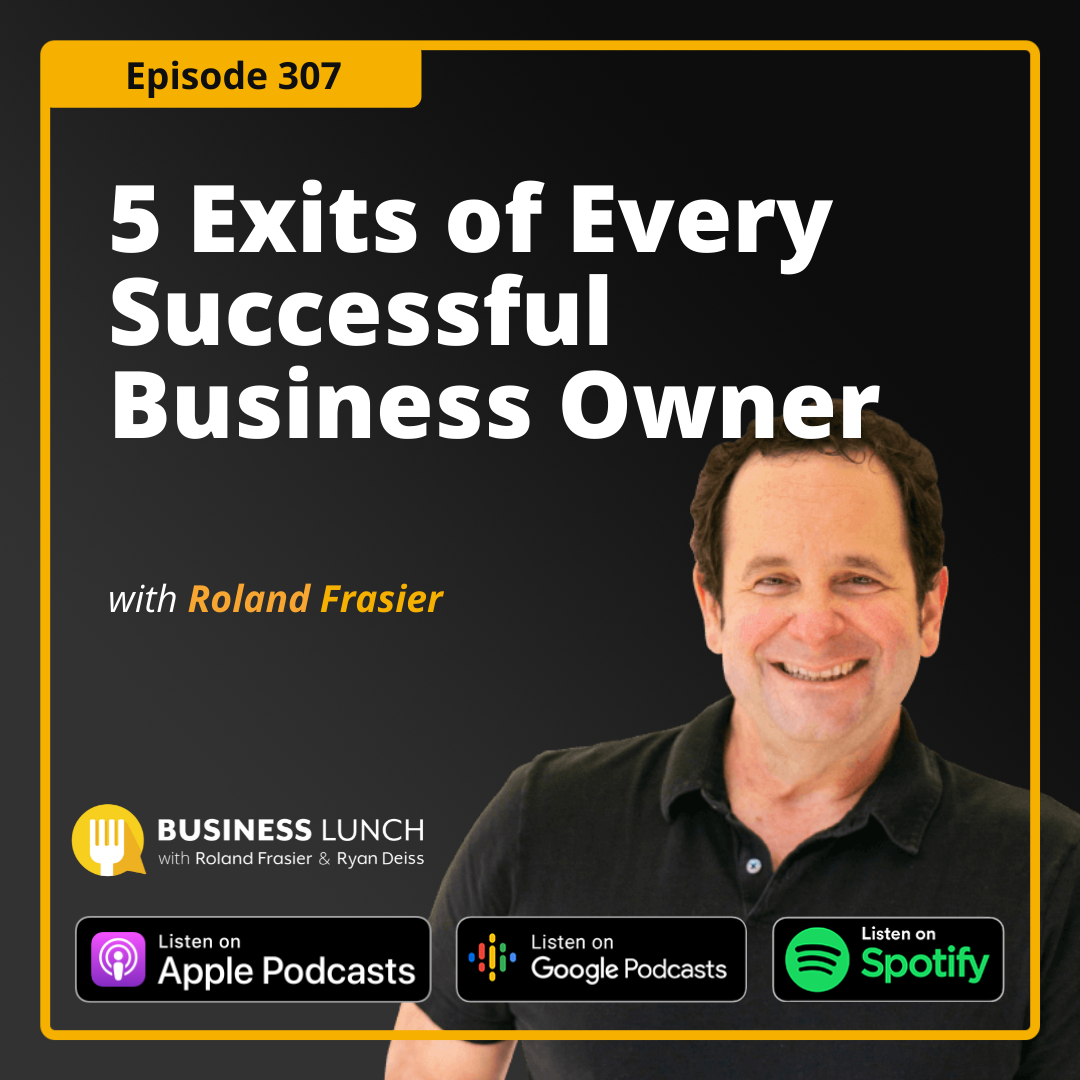What is often called “the five evolutions of a business” can also be thought of as “the five exits every entrepreneur makes in a business” over the course of their entrepreneurial journey.
Today’s episode is another snackable one with Roland Frasier. It’s short and sweet, something you can listen to while you’re running a quick errand or getting something done around the house. This one is all about the five exits you make on your journey from solopreneur to selling your business.
Exit #1: From Solopreneur to Manager
When you first start a business, you’re wearing all the hats, doing all the services. You’re the CEO, CMO, janitor, sales team, and everything in between. Your first exit is from doing to delegating. Instead of you doing the basic thing the business does (offering a service or actual product creation), you hire someone (or several someones) to do it for you. When you hire your first person, you start this first exit.
Exit #2: From Manager to CEO
The next level of exit is going from manager to leader or CEO. We’re not talking about a CEO who does everything—that’s a solopreneur, not a true CEO. A true CEO is someone who has people reporting to them and getting their marching orders. The CEO is truly leading the company and figuring out how to implement the Board of Directors’ vision for the company. When you stop managing and delegating, and you’re responsible for bigger things and being an actual leader and communicating/channeling the directors’ vision, that’s the second exit.
Exit #3: From CEO to Board of Directors
The third exit is when you go from being the CEO to being on the Board of Directors. At that point, you’re really responsible for the strategic direction and vision of the company, how it’s doing in the world as a corporate citizen. You’re communicating with the CEO and saying, “This is our vision, and it’s your responsibility to communicate this to the company and get them to execute it.” You’re not the leader. You’ve stepped off the organizational chart of the company, but you’re still very involved in it. You may have sold a majority part of the company at this point.
Exit #4: From Board of Directors to Investor
Your fourth exit is when you go from the Board of Directors to investor. At this point, you might sell more of your company. You might decide you don’t want to be burdened with, or responsible for, creating the vision of the company any more. You’re interested in what the company is doing, and you’re a shareholder/owner, and you have the ability to impact who is on the Board of Directors, but you’ve moved back several levels to being a simple investor. Your main concern is: how will this asset perform for us in terms of income generation?
Exit #5: Exiting Ownership
The fifth exit is exiting ownership. You don’t want to be an investor anymore. You’ve gotten enough return on your investment, and you’re going to retire from the entire relationship you have with the company. Now you’re a free agent with your capital, moving on to whatever else you’re ready to do.
It’s good to know about the different exits, the different levels of evolution. It’s good to know your options. Maybe you’re tired or burnt out or have other ideas to explore, and it’s time to start making those exits one at a time. Maybe the responsibilities are more than you want to shoulder as CEO, and you can move to the Board and still have impact, but less responsibility. You don’t lose the ability to impact the company until you go through all the exits. Seeing the big picture helps you figure out what fits best with your life and other business opportunities.
RESOURCES:
- ethicallyprofit.com
- getepicchallenge.com
- Scalable.Co
- The Ready to Lead podcast
- DigitalMarketer Podcast
- Perpetual Traffic podcast
OUR PARTNERS:
- Get a free proposal from Conversion Fanatics
- Get 3% cash back on your ad spend with AdCard
- Get Roland’s book, Zero Down, FREE


